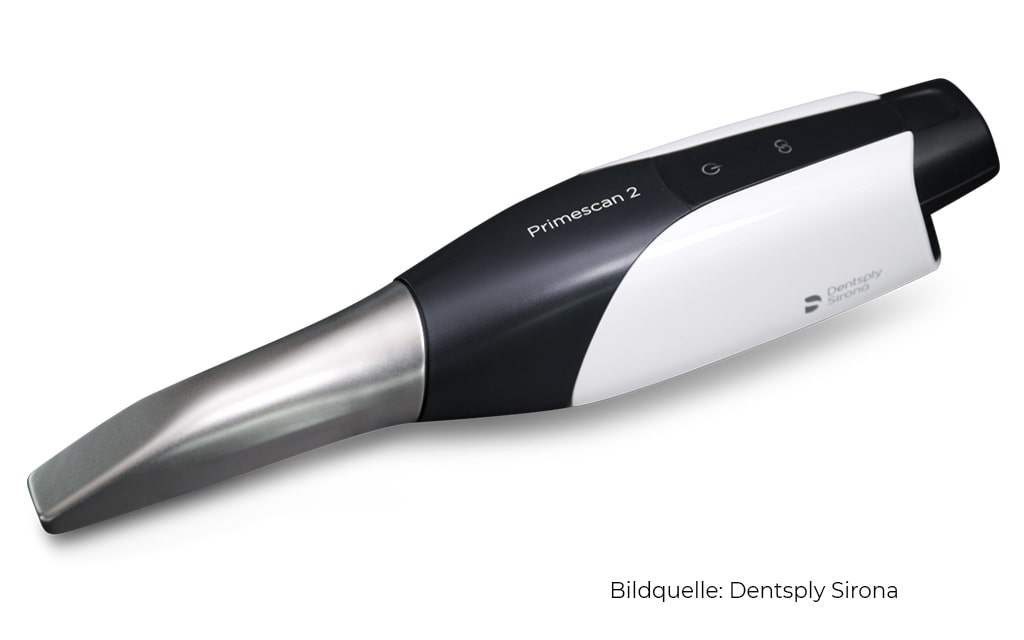Primescan™ 2:
3D Intraoral Scanner
Initial situation:
Dentsply Sirona, one of the leading companies in the dental industry, approached us in search of a new technology for producing the Primescan™ 2 Multiuse Sleeve. The stainless steel window sleeve of the first generation had previously been manufactured in two parts using turning and milling processes, and then assembled using an adhesive bonding method.
The main reason for seeking a new technology was the desire to eliminate the bonding process. The increased design freedom enabled improvements to the stainless steel window sleeve design – for example, by adding lateral ribs that make it easier for users to hold the scanner.
In this case, 3D printing made it possible to manufacture the stainless steel sleeve as a single component and implement the improved design.
Challenges:
The stainless steel window sleeve must meet multiple requirements: It protects the scanner optics with a precisely and fluid-tight integrated window during 3D scanning. At the same time, it is the part of the scanner that comes into contact with the patient. Therefore, the sleeve must be reprocessable – meaning it must be cleanable and disinfectable – to prevent cross-contamination. The scanner tip is classified as a medical device and must therefore feature a clear and traceable identification. Additionally, it must seamlessly blend into the scanner’s aesthetics and ease of use.
Solution approach:
The solution was divided into four key categories:
- 3D printing of stainless steel using SLM
- Turning and milling
- Surface finishing
- Black marking
The real challenge, which required over two years of development, was to coordinate all four process steps in a way that allowed product requirements to be met as cost-effectively as possible.
Result:
By combining sub-processes, we were able to manufacture sleeves that fulfilled all product requirements. The result: a customized solution for Dentsply Sirona!
- Efficient development process: The development cycles enabled faster prototyping and production of functional models and adaptations, significantly shortening product development times.
- Elimination of additional assembly steps: 3D printing enabled the production of a single-piece component.
- Hygienic single-part solution: Reduces the risk of contamination, as there are no connecting joints where germs could form or spread.
- Design freedom: 3D printing allows for designing the geometry of the stainless steel sleeve to fully meet both ergonomic and technical specifications.
- Agile manufacturing: Thanks to rapid data set changes, we were able to accelerate the sleeve’s development and improve the production process.



